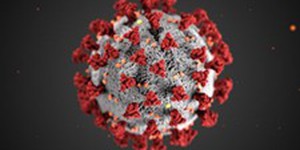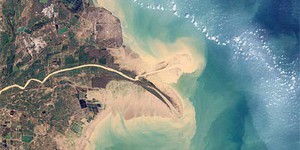Others Like “Protein Fingerprinting” (top 20 results)
|
Over time, viruses evolve. Their evolution is influenced by both neutral drift, the natural mutation rate of the virus, and selective pressure from the hosts' immune systems. Scientists study a virus's genomic evolution—the changes at the nucleotide and amino acid level—to better understand how the virus is spreading and the clinical implications. You can use public databases and tools to do the same type of tracking and analysis of COVID-19 that scientists around the world do. …
Read more
Does the force of drag have an effect on the distance the puck will travel? Think of a way to launch the puck with a reproducible force, and examine the effect of launching the puck in different orientations on the distance it travels. For more information on the physics, see Haché, 2002.
Read more
A solution consists of a solute dissolved in a solvent. A solution is saturated when no additional solute will dissolve in it. You'll need a gram balance, a 100 ml graduated cylinder, three beakers or glass jars, three saucers, water, 50 g non-iodized salt (NaCl), 50 g Epsom salts (MgSO4) and 250 g sugar (sucrose). Method 1: Measure 100 ml water and pour into an empty beaker or jar. Weigh out the suggested amount of the solute to be tested. Add a small amount of…
Read more
The sustainability of our planet's resources ultimately depends upon our actions as citizens. How much we drive, what we eat, whether we have pets, and whether we recycle are all individual actions that affect the sustainability of the Earth's resources. Learn how ecological footprinting works and figure out how big your footprint is. How big is your family's footprint? Your school? A local business? Can you propose ways to increase or decrease the size of your ecological footprint? Develop…
Read more
Mushrooms are not plants, but are fungi. Fungi include mushrooms, molds, and lichen. They do not produce seeds to reproduce like some plants. Fungi produce spores, like more primitive plants do. The spores of a mushroom are contained in the tiny folds around the stem underneath the mushroom cap. Different species of mushrooms have different types of spores, with different colors and different patterns of folds. You can make mushroom prints by removing the stem from a mushroom and placing the…
Read more
Are you interested in the technical and ethical aspects of genetic screening, forensic science, and DNA fingerprinting? Scientists use different forms of a gene, called alleles, to differentiate between two fingerprints. One such sequence used in human DNA fingerprinting is the Alu repeat (a 300 base pair repetitive sequence of DNA) on chromosome 16. During evolutionary time, up to 1 million copies of the Alu repeat have become randomly inserted throughout the human genome. Within a specific…
Read more
If you like to bake, this might be an interesting project for you. When you're following a recipe, do you ever wonder why certain ingredients keep showing up time after time (e.g., baking powder in quick breads)? Do you notice that certain ingredients tend to occur in a particular ratio to one another (e.g., amount of shortening and sugar, or amount of shortening and flour, or number of eggs and amount of flour)? What happens if you use more or less of an ingredient than the recipe calls…
Read more
You probably know that you can use iron filings to reveal the magnetic field produced by a strong magnet. If you sandwich the iron filings between pieces of waxed paper, you can make a permanent record of your magnetic experiments (Gardner, 2004, 66). Cover the wax paper sandwich with a layer of brown paper (from a roll, or cut open a paper shopping bag), and then (with an adult's help) use a hot, dry iron to seal the waxed paper together. You will have to experiment a little with your iron…
Read more
Using just a single sheet of paper (8.5 x 11 inches) and up to five paper clips, can you build a bridge that will span 20 cm and support the weight of 100 pennies? The area beneath the span must be free (so that boats can pass beneath it). To test your bridge, place two books 20 cm apart, and set the bridge on the books, spanning the gap. Do not fasten the bridge to the book (nor to any other support). Does your bridge hold as much weight as you expected it would? If your bridge fails…
Read more
Silt is a fine sediment that collects on the bottoms of rivers, streams and lakes. The natural process of the decay of organisms into the water can lead to the production of silt at the bottom of a lake. Silt can be a rich source of nutrients for fish and bottom dwellers like crayfish. However, it can also be introduced by unnatural processes. One problem for rivers, lakes and streams is the buildup of excess fine sediment introduced by industry. Because it often contains harmful chemicals it…
Read more
|
Explore Our Science Videos
How Train Wheels Stay On Track - STEM activity
Write Secret Messages With Invisible Ink!
Build a Mini Trebuchet








